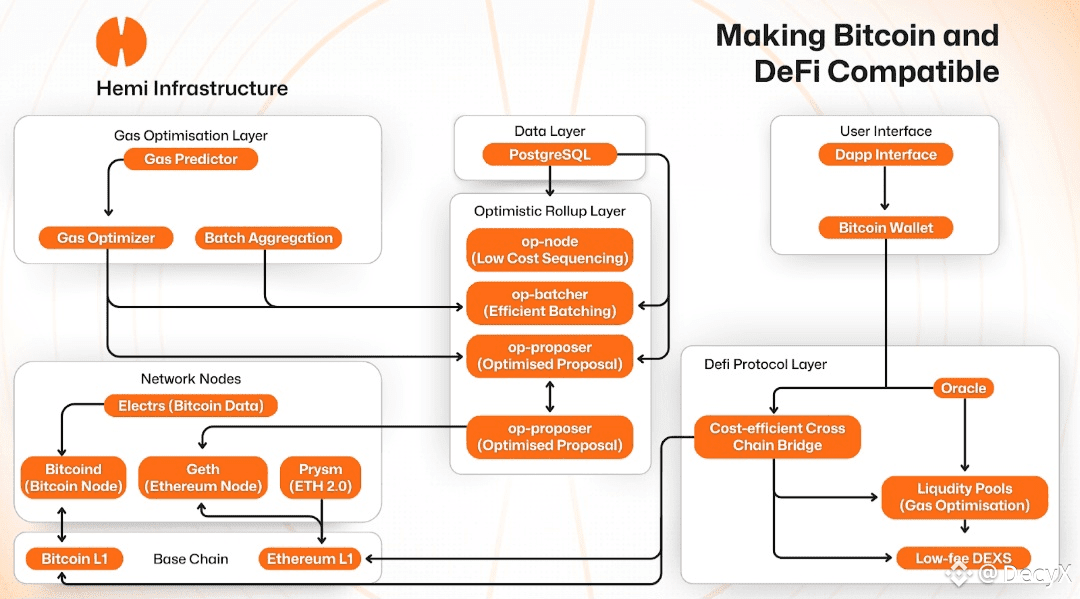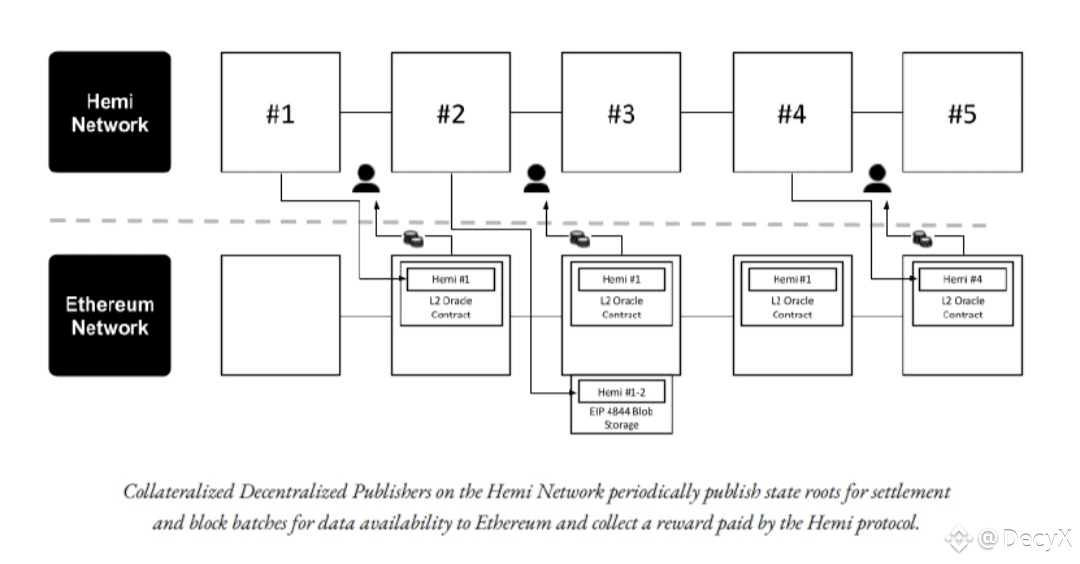The blockchain world continues to evolve, and Hemi stands out as a next generation Layer 2 protocol redefining scalability and security. Built with a vision to enhance the performance of Ethereum, Hemi leverages modular architecture and zero knowledge technology to create an ecosystem that balances speed, decentralization, and trust. Its goal is to make decentralized applications more accessible while maintaining the core principles of blockchain transparency and user control. By focusing on reducing transaction costs and improving throughput, Hemi aims to make Web3 infrastructure seamless and highly efficient for global adoption.
Core Technology and Design Philosophy
At the heart of Hemi’s architecture lies a commitment to modularity, meaning each layer of its ecosystem can be upgraded independently, ensuring continuous scalability and innovation. The design integrates a hybrid zero knowledge rollup model that ensures both efficiency and cryptographic security. Hemi’s framework supports developers by providing robust SDKs, simple APIs, and interoperability tools that encourage cross-chain functionality. This modular design philosophy positions Hemi as a flexible solution for DeFi, gaming, and enterprise-level blockchain applications.
Zero Knowledge Innovation for Security and Efficiency
Hemi’s zero knowledge rollups, often referred to as zk-rollups, represent one of its most groundbreaking features. By using zk proofs, Hemi compresses thousands of off-chain transactions into a single proof that can be verified on Ethereum, ensuring data validity while reducing computational load. This design enhances privacy since sensitive data does not need to be revealed, and it increases efficiency since validation requires minimal on-chain resources. In essence, zk technology allows Hemi to process transactions faster, cheaper, and with maximum security, offering users a smooth experience even during high-network congestion.
Developer Centric Ecosystem
Hemi emphasizes developer empowerment by offering advanced yet user-friendly development kits. These tools simplify the integration of smart contracts and decentralized applications while maintaining compatibility with Ethereum Virtual Machine standards. Developers can seamlessly deploy existing Solidity-based projects on Hemi without rewriting core logic. Moreover, Hemi supports advanced debugging and analytics tools that improve performance tracking and ensure smoother application scaling. By reducing friction for developers, Hemi ensures that innovation remains constant, encouraging a wave of creative applications across finance, infrastructure, and consumer markets.
Scalability as a Cornerstone
Scalability is one of the most critical challenges in blockchain, and Hemi addresses it through dynamic rollup batching and adaptive data compression. These techniques allow the network to handle massive transaction volumes without compromising security. Hemi’s transaction finality is achieved in seconds, ensuring low latency while keeping fees minimal. The result is a blockchain that can serve millions of users simultaneously, making it a viable platform for real world applications like digital identity, micropayments, and global remittances.
Interoperability and Cross Chain Connectivity
In an era where blockchain ecosystems need to communicate effectively, Hemi shines by emphasizing interoperability. Its native bridge supports seamless asset transfers between Ethereum and other chains, enabling cross chain liquidity and user flexibility. The protocol employs a secure message passing framework that allows dApps to exchange information between different ecosystems without centralized intermediaries. This vision of connected blockchains builds the foundation for a more integrated and collaborative Web3 experience.
Sustainable Blockchain Infrastructure
Sustainability remains a key aspect of Hemi’s mission. The protocol minimizes energy consumption by relying on off-chain computation and efficient proof generation. Unlike traditional proof of work systems, Hemi’s zk-based model consumes significantly less power, making it an environmentally friendly solution for decentralized systems. This efficiency aligns with global efforts to reduce blockchain’s carbon footprint, positioning Hemi as a forward thinking and responsible innovation in the crypto space.

Institutional Adoption and Enterprise Integration
Hemi’s modular architecture is not only ideal for decentralized projects but also for large enterprises exploring blockchain adoption. Its compliance ready design allows for private deployments with customizable access controls, catering to industries like banking, supply chain, and healthcare. By providing enterprise APIs and governance modules, Hemi bridges the gap between traditional business systems and decentralized infrastructure. As more institutions seek reliable, transparent, and scalable blockchain solutions, Hemi stands ready to meet their needs.
The Role of Governance and Decentralization
Decentralization is at the core of Hemi’s philosophy. The platform employs a governance model that empowers community members to participate in decision making, protocol upgrades, and economic policies. This democratic structure ensures that network evolution aligns with the community’s shared vision. Through governance tokens, users can vote on proposals, creating a self sustaining ecosystem where power is distributed rather than concentrated.
Real World Use Cases and Implementation
Hemi’s technology has broad applicability across various sectors. In decentralized finance, it can support lending platforms and liquidity protocols that require high throughput and low transaction costs. In gaming, it enables real time asset exchanges and NFT trading without performance bottlenecks. For enterprise solutions, it provides secure data management systems and transparent auditing mechanisms. These use cases highlight Hemi’s versatility and its potential to power the next generation of decentralized innovation.
Challenges and Path to Future Growth
Despite its advanced architecture, Hemi faces challenges like onboarding non technical users and expanding developer adoption. As competition in the Layer 2 space intensifies, Hemi’s success depends on community growth, partnerships, and real world implementation. The team’s focus on education, accessibility, and interoperability continues to strengthen its long term outlook. By addressing these challenges through collaboration and iterative improvement, Hemi positions itself as a sustainable and scalable Layer 2 leader.
Conclusion
Hemi represents more than a scalability solution, it embodies a movement toward efficiency, inclusivity, and transparency in blockchain technology. By combining zero knowledge proofs, modular architecture, and an open governance model, Hemi lays the foundation for a truly decentralized future. Whether through empowering developers, supporting enterprises, or enabling secure global transactions, Hemi is building an ecosystem designed for mass adoption and long term resilience. Its vision transcends technical innovation, aiming to make blockchain technology an integral part of everyday life, seamlessly integrated, efficient, and sustainable.